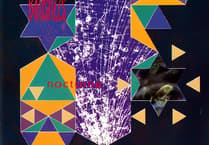For my 12th and final article exploring folklore in locations all over the Isle of Man, I come to St John’s, the historical home of Manx government and so much more.
The rulers and law-makers of the island have gathered at Tynwald Hill since at least Viking times and so it is no surprise that the animals of folklore would do the same.
So it was that the birds gathered here and agreed to decide who should be king by who could fly the highest. Up they went, straight up from the hill, flying into the sky until only the eagle was left.
When it could fly no more it cried out triumphantly that it was the king. But from its hiding place beneath the eagle’s wing, the tiny wren emerged and fly up just a short distance higher.
So it was that the wren became king, as anyone who has been out on December 26 to Hunt the Wren will know, as we sing: ‘The wren, the wren, the king of all birds!’
As an important political site, it is no surprise that Tynwald Hill is also an important folklore place. For instance, it is a good place to gain good luck, if you walk clockwise around the base of the hill three times.
Or, alternatively, you could carry out the ‘shiaght mynney mollaght;’ an evil curse sure to cause terrible things, perhaps even death. People would come here at night and turn a small ‘Swearing Stone’ seven times inside the hollow of another stone. This was done secretly, as the punishment for such ‘witchcraft’ would be very serious.
Just behind the hill, on the road northwards towards Tynwald Mills, is the Giant’s Grave. Sadly, there are no stories noted of this particular giant but, if the creature was anything like the one whose four-foot-long shin bone was dug up from Braddan in the 1720s, they must have been enormous! Locally, the site is also known as ‘King Orry’s Grave’.
There is folklore connected to the walkway between the Hill and church. Rushes are lain here on Tynwald Day, in thanks to Manannan, who ruled the island with great peace and prosperity, keeping it safe with his cloak of mist. All he asked for as rent from Manx people was a bundle of rushes.
The Viking-era carved cross usually housed in the church is undergoing restoration with Manx National Heritage, but there was once another cross here. When this other cross was dug up and put on display in the church porch, the cattle of neighbouring farms began to fall ill.
The vicar of St John’s refused to consider any connection between the two as anything but superstition, forcing the farmers to take it into their own hands. They came at night, took the cross, and buried it in a secret location undiscovered to this day.
We occasionally lead an hour-long tour of St John’s folklore, such is the wealth of folklore here.




